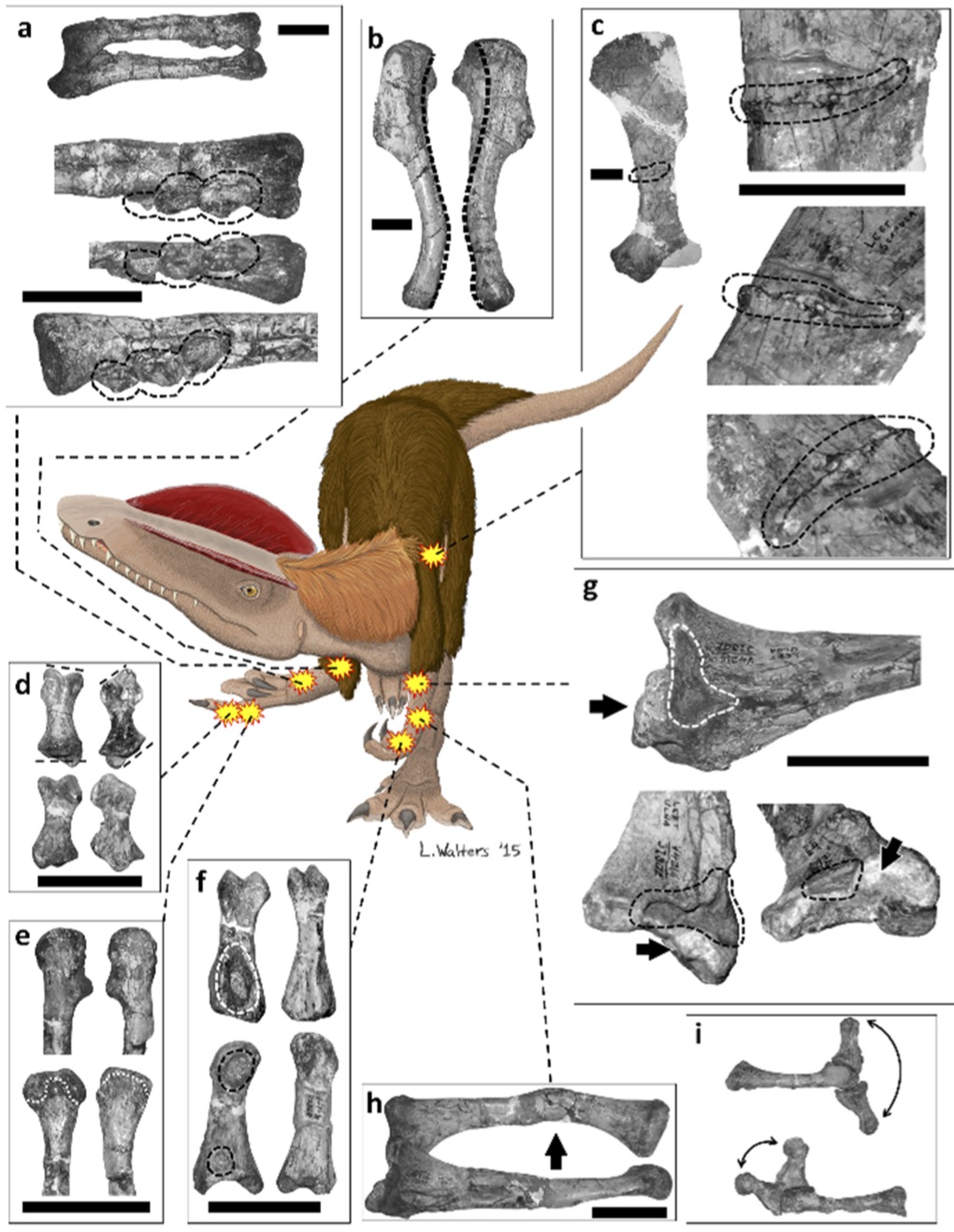Injuries are common in the fossilised remains of dinosaurs, but the recent discovery of a severely roughed-up skeleton in Arizona establishes a new record for the most bone injuries sustained by a single theropod. This guy got wrecked.
The dinosaur in question belongs to a species of theropod called Dilophosaurus wetherilli. These creatures lived about 193 million years ago during the early Jurassic Period, and were among the largest carnivores of their time. A fully mature adult measured around 6m long and weighed as much as 500kg. In addition to their impressive size, dilophosaurus were known for a pair of cranial crests and a notch behind the first row of teeth, giving the beasts a crocodile-like appearance.

A reconstruction of Dilophosaurus wetherilli at the Geological Museum of the Polish Geological Institute, Warsaw
In a recent PLOS One study, paleontologists Phil Senter and Sara Juengst from Fayetteville State University analysed the remains of a specimen recently uncovered in Arizona. This dilophosaurus appears to have been roughed up in an encounter, but it somehow managed to survive.

Credit: Senter and Juengst/PLOS ONE, 2016
On its left side, the dinosaur suffered a fractured shoulder blade and several fractures and fibriscesses (like an abscess in mammals) in its ulna (the thinner, longer bone in its forearm) and hand. On its right, it had abnormal twisting in its upper arm, bony tumours on its forearm, messed-up metacarpal hand bones and severe deformities in its third finger. In all, eight distinct injuries were detected in the skeleton. That’s a new record. What’s more, many of these wounds had healed, suggesting the animal was able to live for months, and possibly years, after these injuries appeared. The deformity in its third finger, however, may have occurred at birth.
So what happened?
Senter and Juengst aren’t entirely sure, but they say the injuries could have been the result of a single, high-energy encounter with a tree or a rock wall during a fight. During the battle, a rival dinosaur could have caused the puncture wounds to the hand and toe claws. The dilophosaurus may have survived the encounter, but the injuries “must have severely compromised the use of the forelimbs in prey capture,” wrote the researchers.
To survive during the healing period, the dinosaur likely fed on small prey that it was able to catch with its mouth or feet, or with its one good forelimb. It must have been a pathetic sight. But as the researchers conclude, this dilophosaurus is “a testament to the hardiness of an animal that doubtlessly experienced an agonizingly long duration of high degrees of pain” across its body.
[PLOS ONE]
Top image: Dilophosaurus wetherilli (Royal Ontario Museum, Toronto)
